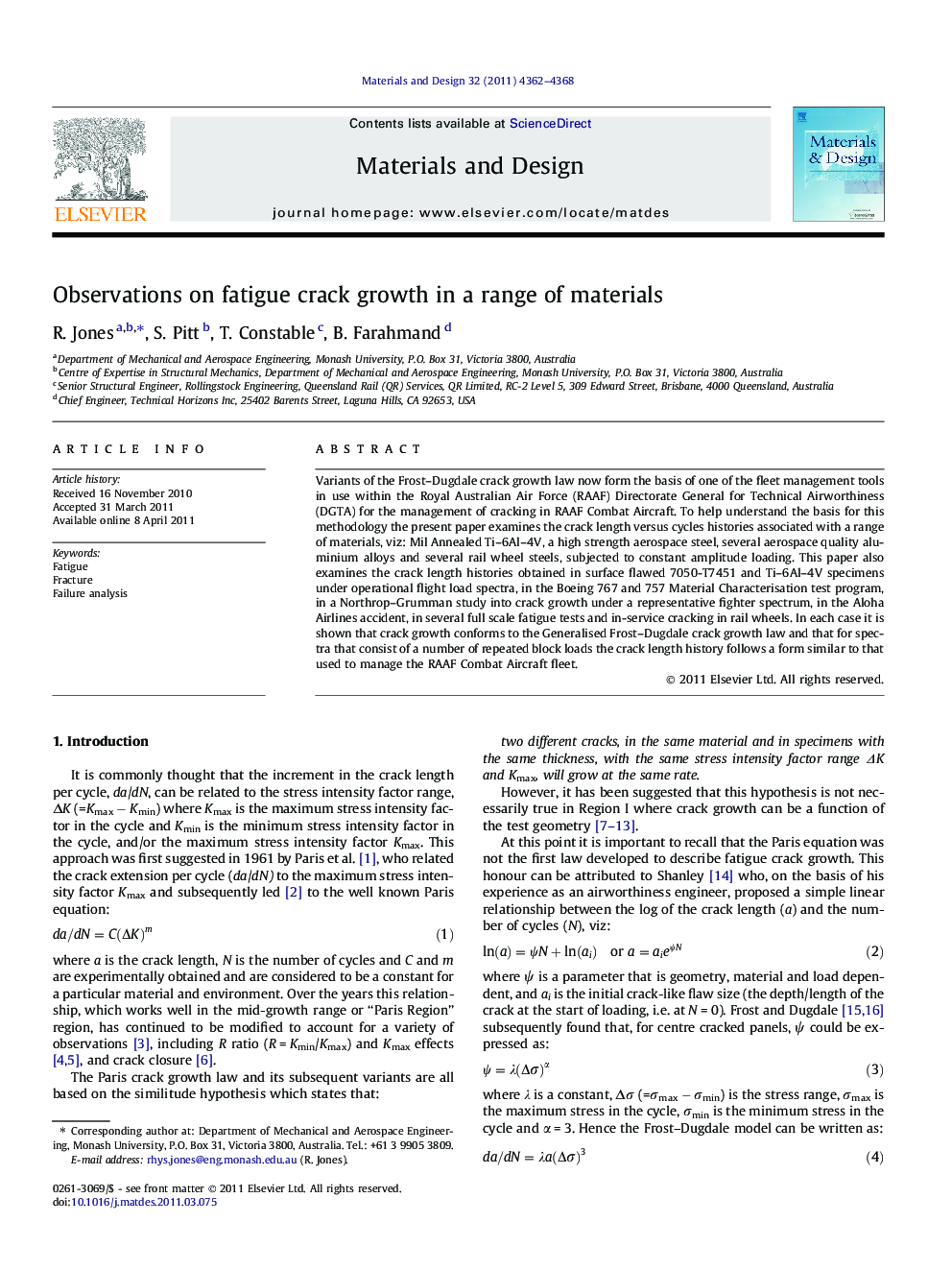| Article ID | Journal | Published Year | Pages | File Type |
|---|---|---|---|---|
| 831362 | Materials & Design (1980-2015) | 2011 | 7 Pages |
Variants of the Frost–Dugdale crack growth law now form the basis of one of the fleet management tools in use within the Royal Australian Air Force (RAAF) Directorate General for Technical Airworthiness (DGTA) for the management of cracking in RAAF Combat Aircraft. To help understand the basis for this methodology the present paper examines the crack length versus cycles histories associated with a range of materials, viz: Mil Annealed Ti–6Al–4V, a high strength aerospace steel, several aerospace quality aluminium alloys and several rail wheel steels, subjected to constant amplitude loading. This paper also examines the crack length histories obtained in surface flawed 7050-T7451 and Ti–6Al–4V specimens under operational flight load spectra, in the Boeing 767 and 757 Material Characterisation test program, in a Northrop–Grumman study into crack growth under a representative fighter spectrum, in the Aloha Airlines accident, in several full scale fatigue tests and in-service cracking in rail wheels. In each case it is shown that crack growth conforms to the Generalised Frost–Dugdale crack growth law and that for spectra that consist of a number of repeated block loads the crack length history follows a form similar to that used to manage the RAAF Combat Aircraft fleet.
► We show that in-service cracking conforms to the Generalised Frost-Dugdale law. ► The normalised histories are similar regardless of the material, spectra or thickness. ► The normalised histories are similar to that seen in RAAF Combat Aircraft.
